The Ultimate Guide to Parmesan Alternatives: From Argentina to Switzerland
When we think of Parmesan cheese, we often think of the renowned Parmigiano Reggiano from Italy. However, cheese lovers and culinary adventurers will be delighted to know that exceptional Parmesan-style cheeses are crafted in various regions worldwide, each offering unique flavors and textures. This post will explore these alternative Parmesan cheeses, taking you on a journey from the lush pastures of Wisconsin to the rolling hills of Switzerland and beyond.
Wisconsin’s rich dairy tradition in the United States has created award-winning Parmesan that rivals its Italian counterpart. Known for its nutty, robust flavor and granular texture, Wisconsin Parmesan is a testament to American cheese-making prowess.
Argentina, a country with a strong Italian influence in its cuisine, offers its own version of Parmesan-Reggianito. This smaller yet flavorful cheese is slightly sweeter and saltier, making it a delightful addition to any dish.
Switzerland, too, offers its twist with Sbrinz, an ancient cheese that predates Parmigiano Reggiano. Aged for up to three years, Sbrinz boasts a rugged, crumbly texture and a complex flavor profile that cheese enthusiasts adore.
Join me as I look into the diverse world of alternative Parmesan cheeses, uncovering hidden gems that bring global flair to your culinary creations.
Parmesan From Wisconsin
Wisconsin, often referred to as “America’s Dairyland,” has a long and storied history of cheese-making, and its Parmesan is a standout product within this rich tradition. Wisconsin Parmesan cheese is celebrated for its high quality and distinct flavor, which stem from the region’s ideal dairy farming conditions and its commitment to artisanal cheese-making techniques.
The state’s lush pastures provide optimal grazing for dairy cows, which produce high-quality, rich-flavored milk. This milk is the foundation for Wisconsin Parmesan, giving it a robust and nutty profile comparable to the famed Parmigiano Reggiano of Italy. Wisconsin cheesemakers use traditional methods, including aging the cheese for at least ten months to develop its characteristic hard, granular texture and deep, savory taste.
One critical difference in Wisconsin Parmesan is the subtle regional nuances of the local terroir—the unique combination of climate, soil, and natural flora. These factors contribute to a slightly different flavor profile, offering hints of sweetness and tanginess that distinguish it from its Italian cousin.
Moreover, Wisconsin’s cheese industry is known for its innovation and adherence to strict quality standards. Many Wisconsin Parmesan producers are award-winning and recognized in national and international cheese competitions. Their dedication to craftsmanship ensures that every Parmesan wheel meets the highest taste and texture standards.
In addition to traditional Parmesan, Wisconsin also produces a variety of Parmesan-style cheeses that incorporate local ingredients and flavors, offering unique twists on this classic cheese. Whether grated over pasta, shaved onto salads, or enjoyed on its own, Wisconsin Parmesan brings a deliciously distinct taste to the table, making it a beloved choice for cheese enthusiasts across the globe.
Producers
Here are some notable producers known for their quality and dedication to cheese-making:
- BelGioioso Cheese Inc.: Based in Green Bay, Wisconsin, BelGioioso is a family-owned company known for its Italian-style cheeses, including Parmesan. It emphasizes traditional cheese-making techniques and uses locally sourced milk to create its award-winning cheeses.
- Sartori Company: Located in Plymouth, Wisconsin, Sartori has produced artisan cheeses since 1939. They are recognized for their wide range of cheeses, including their Parmesan, aged to perfection to develop its signature flavor and texture.
- Carr Valley Cheese: With multiple locations across Wisconsin, Carr Valley Cheese has been crafting cheese for over 100 years. They offer a variety of cheeses, including several Parmesan-style cheeses that showcase Wisconsin’s dairy heritage and cheese-making expertise.
- Emmi Roth USA: This company, part of the Swiss Emmi Group, operates in Monroe, Wisconsin. It specializes in Swiss-inspired cheeses but also produces Parmesan-style cheeses that reflect its commitment to quality and craftsmanship.
- Hook’s Cheese Company: Based in Mineral Point, Wisconsin, Hook’s Cheese is known for its aged cheeses, including Parmesan, for extended periods to enhance its flavor and complexity.
These producers represent just a snapshot of Wisconsin’s vibrant cheese industry, where each company brings its expertise and passion to cheese-making. Whether you’re looking for traditional or unique Parmesan-style cheeses, Wisconsin offers many options that showcase the region’s rich dairy heritage and commitment to producing world-class cheeses.
Argentina Parmesan
In Argentina, Parmesan-style cheese is known as “Reggianito,” which translates to “little Reggiano” in Spanish. This cheese pays homage to its Italian origins while adapting to Argentine tastes and cheese-making traditions.
Reggianito is produced primarily in Argentina’s central and eastern regions, where the climate and dairy farming practices are conducive to cheese production. The cheese-making process follows a similar method to Parmigiano Reggiano in Italy, starting with high-quality cow’s milk rich in flavor and nutrients.
The cheese is aged for at least 8 months, though some varieties are aged longer to enhance their flavor and texture. Reggianito develops a firm, granular texture and a nutty, slightly salty flavor profile during aging. It is typically used as a grating cheese, much like Parmigiano Reggiano, making it a versatile ingredient in Argentine cuisine.
What distinguishes Reggianito from its Italian counterpart is its unique regional characteristics and the influence of Argentine dairy farming practices. The cheese often exhibits a slightly sweeter taste compared to Parmigiano Reggiano, which can be attributed to variations in milk composition and aging conditions.
Reggianito is a special cheese in Argentine culinary culture. It is used to flavor pasta dishes, gratins, and various traditional Argentine dishes. Its popularity extends beyond Argentina’s borders, making it a sought-after cheese for those who taste South American cheese-making excellence with Italian roots.
Producers
In Argentina, several cheese producers are known for crafting Reggianito, the Parmesan-style cheese that reflects Italian influences while embracing local flavors and traditions. Here are some notable producers:
- Sancor Cooperativas Unidas Limited: Sancor is one of the largest dairy cooperatives in Argentina. It is known for producing a variety of cheeses, including Reggianito. Sancor emphasizes quality control and traditional cheese-making techniques to ensure its cheeses’ authentic taste and texture.
- La Suerte S.A.: Based in the province of Santa Fe, La Suerte is a well-known cheese producer that offers a range of cheeses, including Reggianito. They focus on using locally sourced milk and adhering to strict standards to produce cheeses that meet the expectations of Argentine consumers.
- Verónica: Verónica is another prominent cheese producer in Argentina, recognized for its commitment to artisanal cheese-making practices. They produce Reggianito, among other cheeses, using traditional methods to achieve a distinctive flavor profile that appeals to cheese enthusiasts.
- Holanda S.A.: This company has a history of excellence in cheese-making in Argentina. It specializes in a variety of cheeses, including Reggianito. It combines modern production techniques with traditional recipes to create high-quality cheeses that are popular in both domestic and international markets.
- Tregar: Tregar is known for producing Reggianito, which resembles traditional Italian cheese-making methods. They emphasize the aging process to develop the cheese’s characteristic flavor and texture, ensuring a premium product that reflects their dedication to quality.
These producers represent a selection of Argentina’s vibrant cheese industry, where each company brings expertise and regional influences to the craft of cheese-making. Reggianito continues to be a beloved cheese in Argentine cuisine, appreciated for its versatility and distinctive flavor that adds richness to various dishes.
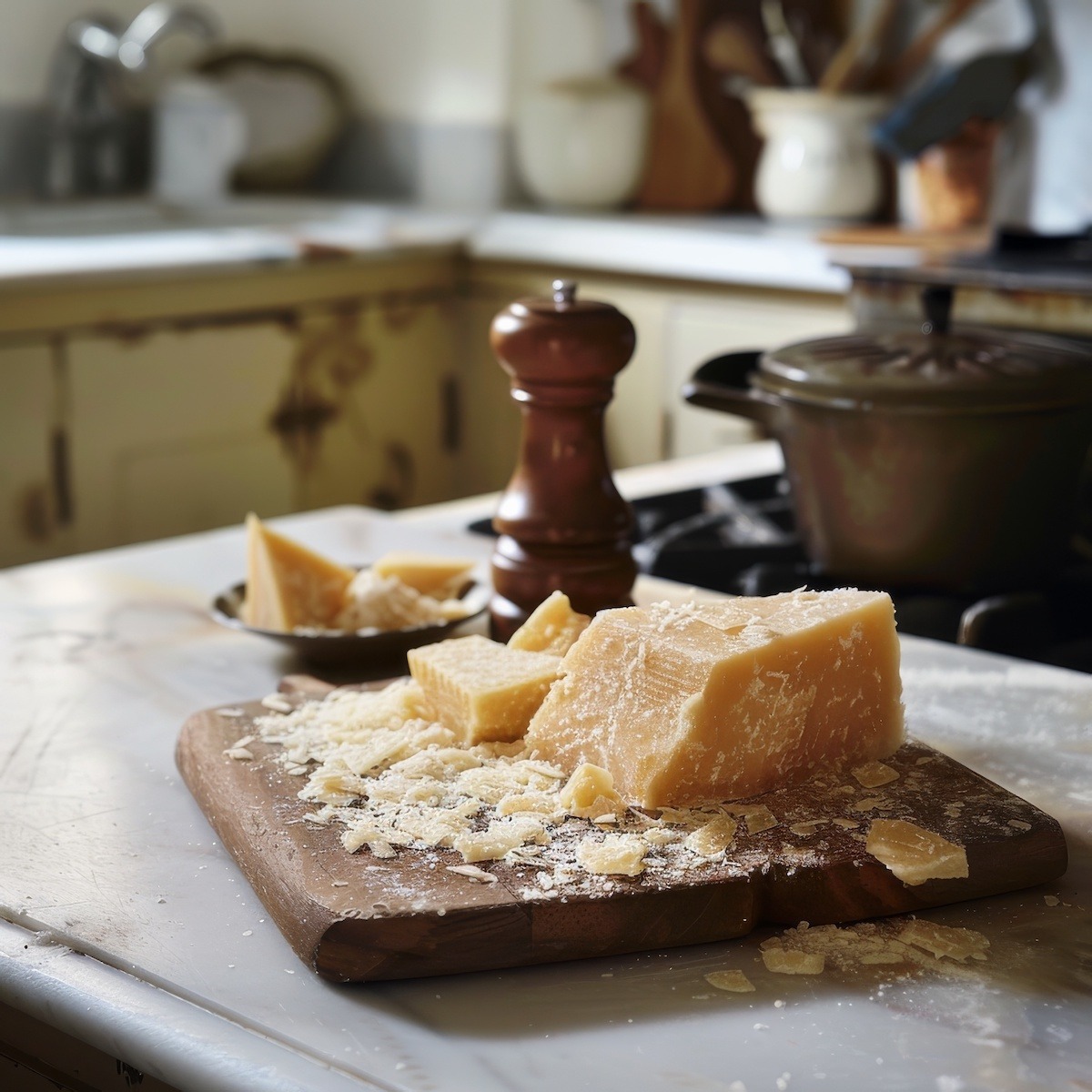
Sbrinz in Switzerland
In Switzerland, Parmesan-style cheese is known as “Sbrinz,” it holds a unique place in the country’s rich cheese-making heritage. Here are some key details about Sbrinz cheese:
- Origin and History: Sbrinz is one of the oldest Swiss cheeses, and its history dates back over 700 years. It originates from the central Swiss canton of Obwalden, where cheese-making traditions have been preserved for centuries.
- Cheese-Making Process: Sbrinz is made from raw cow’s milk sourced from local dairy farms in the Swiss Alps. The milk is heated and curdled using traditional methods and then pressed into large wheels weighing up to 45 kilograms (almost 100 pounds). After pressing, the cheese is salted and aged for at least 18 months, often extending to several years, in cool, humid cellars.
- Flavor and Texture: Sbrinz cheese is renowned for its hard, dense texture and granular consistency, similar to Parmigiano Reggiano. It has a complex flavor profile characterized by nutty, slightly spicy, and savory notes. The aging process contributes to its intense flavor, making it a favorite among cheese connoisseurs.
- Use in Cuisine: Sbrinz cheese is grated or shaved over pasta dishes, risottos, and salads. Its robust flavor also pairs well with fruits, nuts, and wines, adding depth to savory and sweet recipes.
- Protected Designation of Origin (PDO): Like Parmigiano Reggiano in Italy, Sbrinz holds a PDO status in Switzerland, which ensures that only cheese produced according to specific traditional methods within designated regions can bear the name “Sbrinz.” This protection helps maintain the cheese’s quality and authenticity.
Sbrinz cheese continues to symbolize Swiss cheese-making excellence. It is prized for its long history, meticulous production methods, and exceptional flavor. It remains a cherished ingredient in Swiss cuisine and a testament to its commitment to preserving its culinary heritage.
Producers
Several notable cheese producers in Switzerland are renowned for crafting Sbrinz cheese, each contributing to the rich tradition and high quality of this Parmesan-style cheese. Here are some of the prominent producers:
- Emmi Group: Emmi is a leading Swiss dairy company that produces various cheeses, including Sbrinz. It combines modern production techniques with traditional cheese-making methods to ensure the authenticity and quality of its cheeses.
- Chäs Glauser AG: Located in the canton of Bern, Chäs Glauser specializes in artisanal cheeses, including Sbrinz. They emphasize sustainable practices and meticulous aging to produce cheeses that reflect the unique flavors of the Swiss Alps.
- Chäs Hütte AG: Based in the canton of Obwalden, the heartland of Sbrinz production, Chäs Hütte AG is known for its commitment to traditional cheese-making techniques. It produces Sbrinz cheese that closely resembles centuries-old recipes and aging processes.
- Chäs Vreneli AG: This cheese dairy, located in the Emmental region of Switzerland, produces a variety of Swiss cheeses, including Sbrinz. They focus on using high-quality milk from local farms and ensuring rigorous quality control throughout the cheese-making process.
- Alpkaese Airolo: Situated in the canton of Ticino, Alpkaese Airolo specializes in Alpine cheeses, including Sbrinz. They emphasize the natural environment of the Swiss Alps and the unique terroir that contributes to the distinctive flavors of their cheeses.
Are They More Affordable?
Generally, Parmesan-style cheeses produced outside of Italy, such as those from Wisconsin, Argentina (Reggianito), and Switzerland (Sbrinz), can be more affordable than Parmigiano Reggiano due to various factors:
- Production Costs: Cheese production costs vary significantly based on labor, milk prices, and regulatory requirements. Countries with lower production costs may offer Parmesan-style cheeses at a lower price.
- Currency Exchange Rates: Exchange rates between currencies can impact the cost of imported cheeses. Cheese produced locally may be more competitive than imported Parmigiano Reggiano due to lower transportation and importation costs.
- Aging and Production Techniques: Traditional Parmigiano Reggiano from Italy undergoes a strict aging process (often 18 months to several years), which can increase production costs. Some Parmesan-style cheeses from other regions may have shorter aging times or use different production techniques, affecting their pricing.
- Market Demand and Supply: The demand for Parmigiano Reggiano can sometimes lead to higher prices due to its reputation and unique production methods. Parmesan-style cheeses from other regions may have a different level of global demand, potentially leading to lower prices.
While there can be cost differences, the quality and flavor profiles of Parmesan-style cheeses from various regions can still be excellent. They offer consumers a more affordable alternative to Parmigiano Reggiano while exploring different cheese-making traditions and flavors.

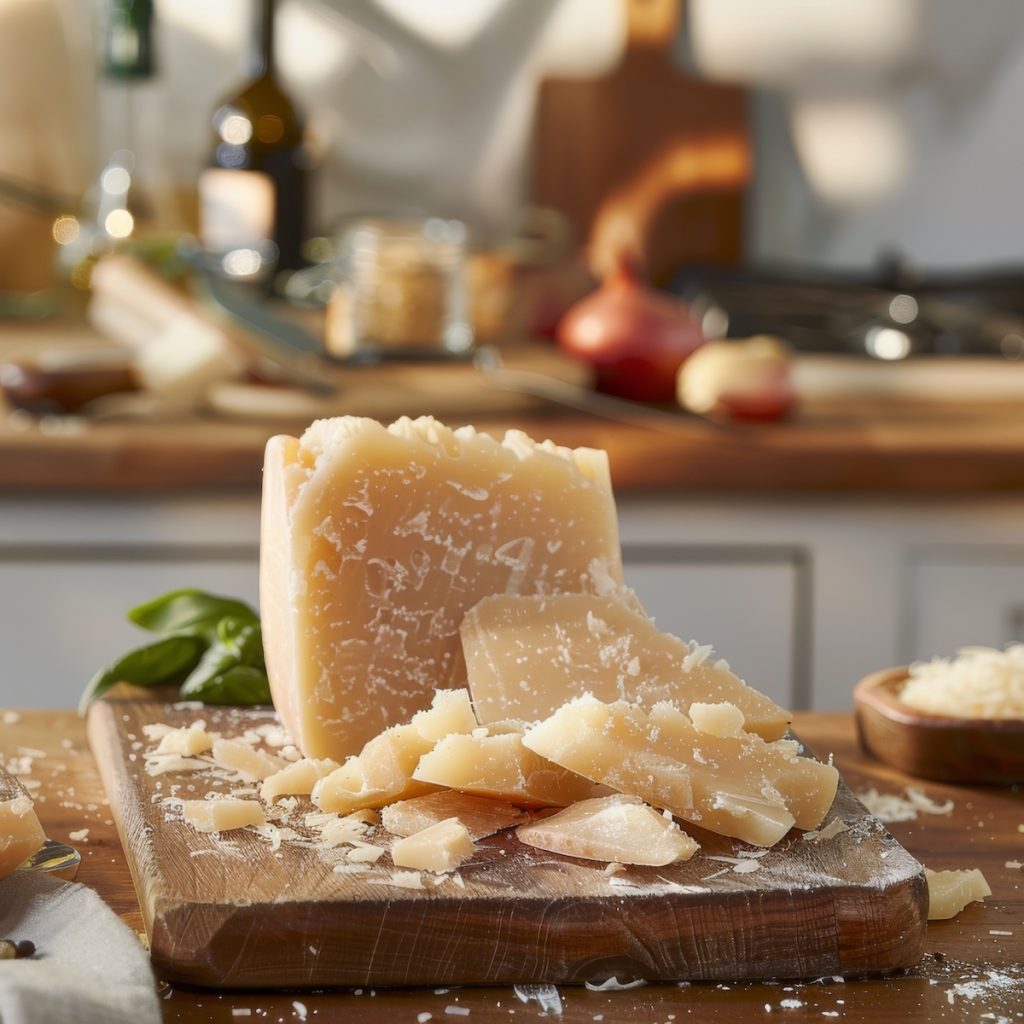


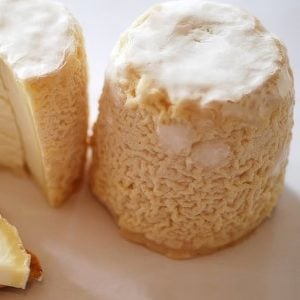
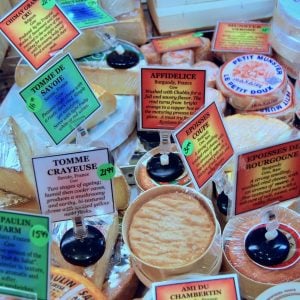
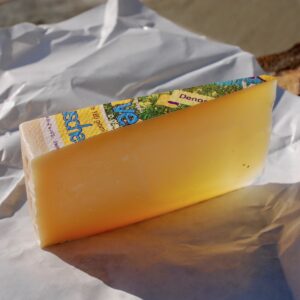
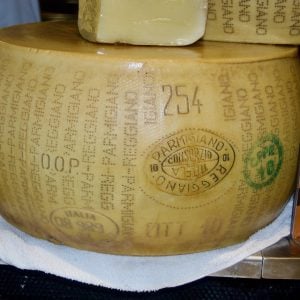
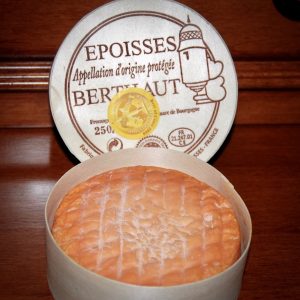
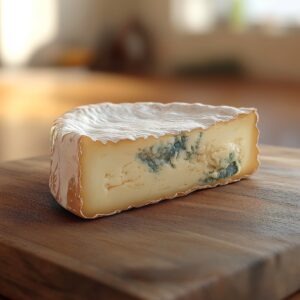
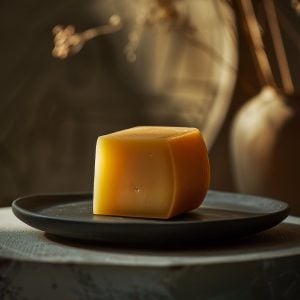


4 Responses
I love the SarVecchio Parm. Yum, yum.
Can you let us know which market sells it for about $8/lb.?
Hi John, I purchased mine at the cheese shop in the Ardmore farmer’s market in Ardmore, PA. – RG
I am looking for a recipe for grating sarvecchio Parmesan . Any help will be appreciated. It is my favorite cheese. I have fresh goat milk and would like to make some.
Not sure what you are asking Brenda – how to grate Parmesan or how to make it at home. – RG
According to the Italians, it is Asiago cheese that is the poor man’s Parm.
Didn’t know that Laura, thanks for sharing.